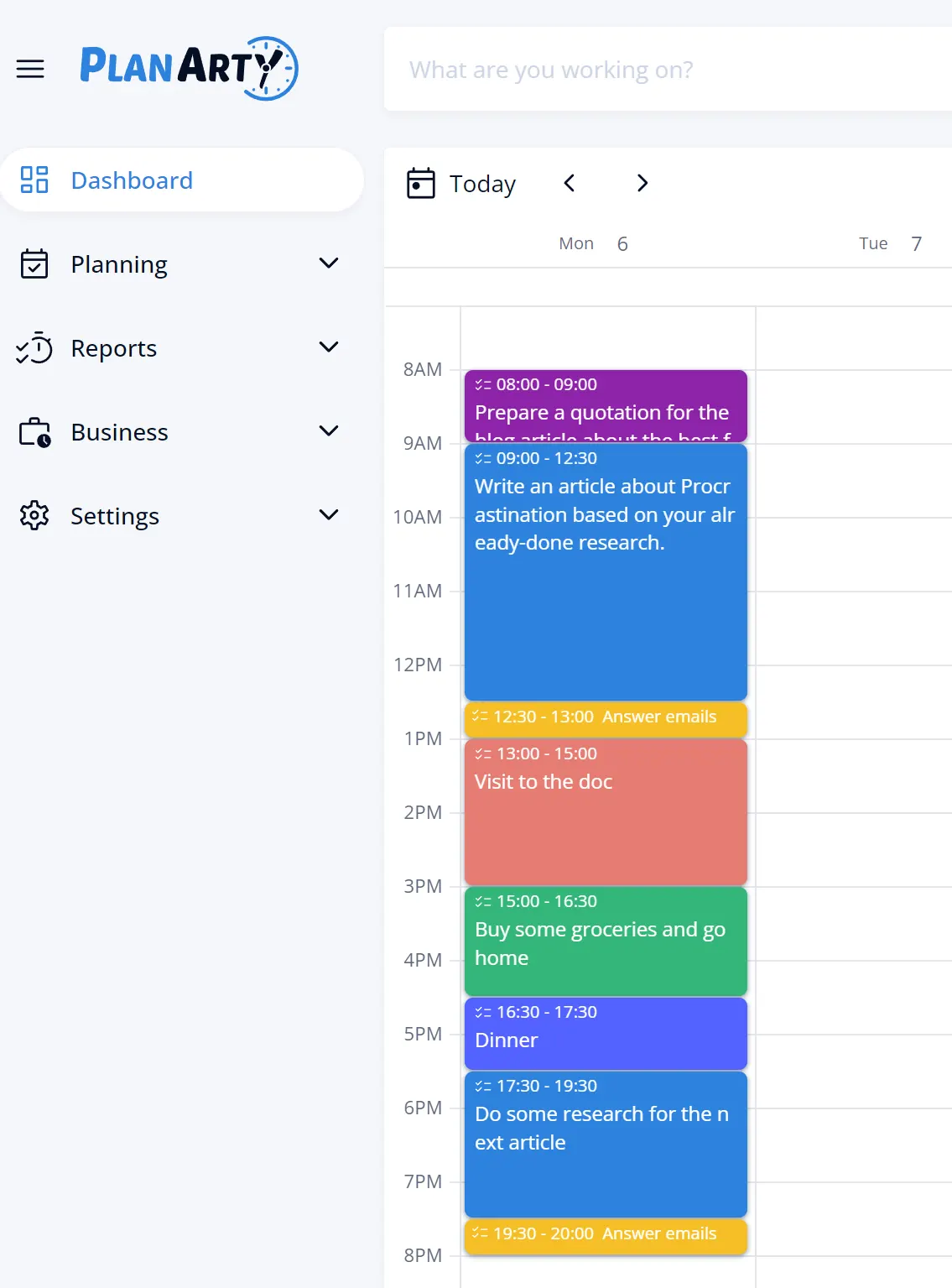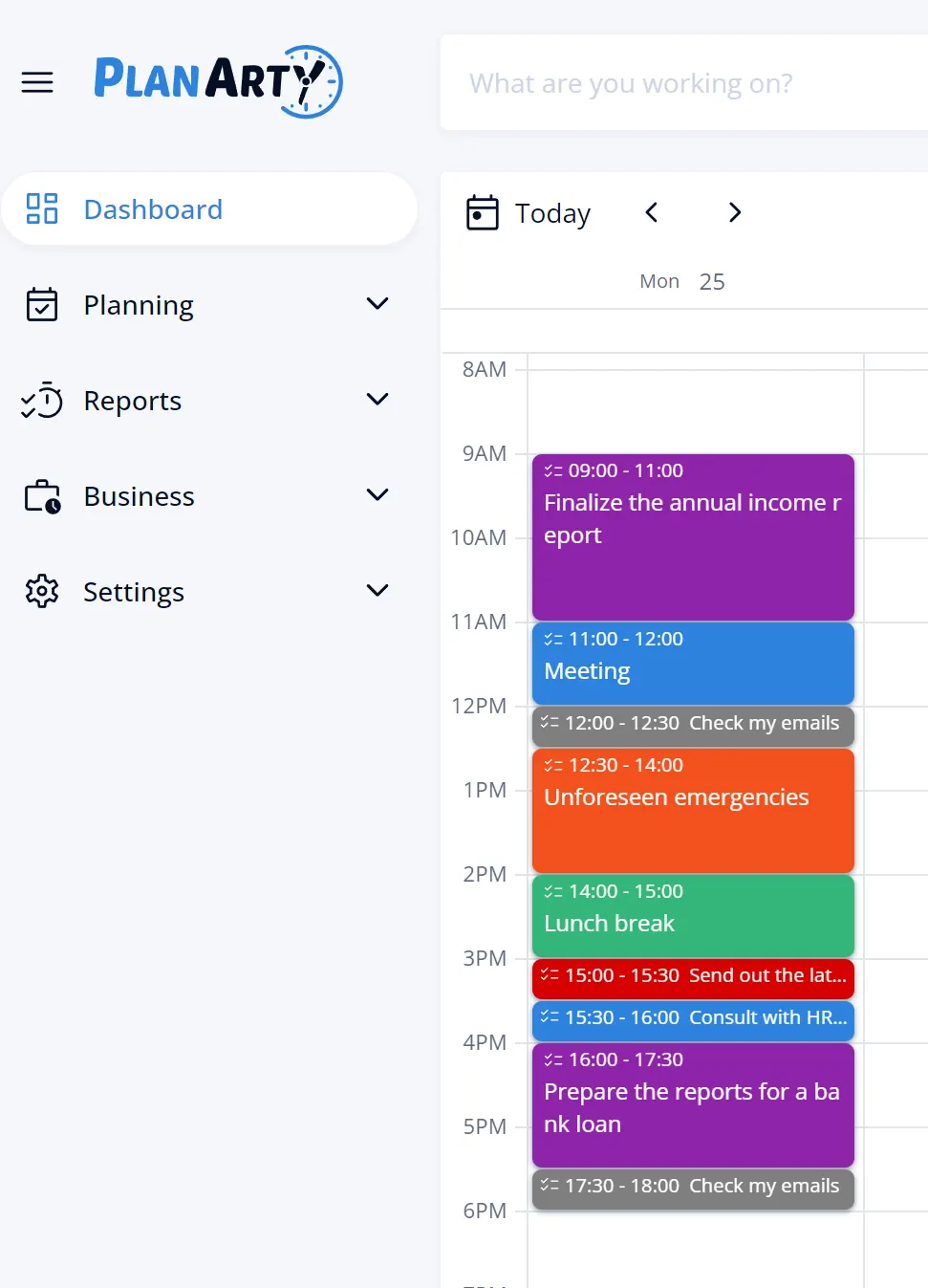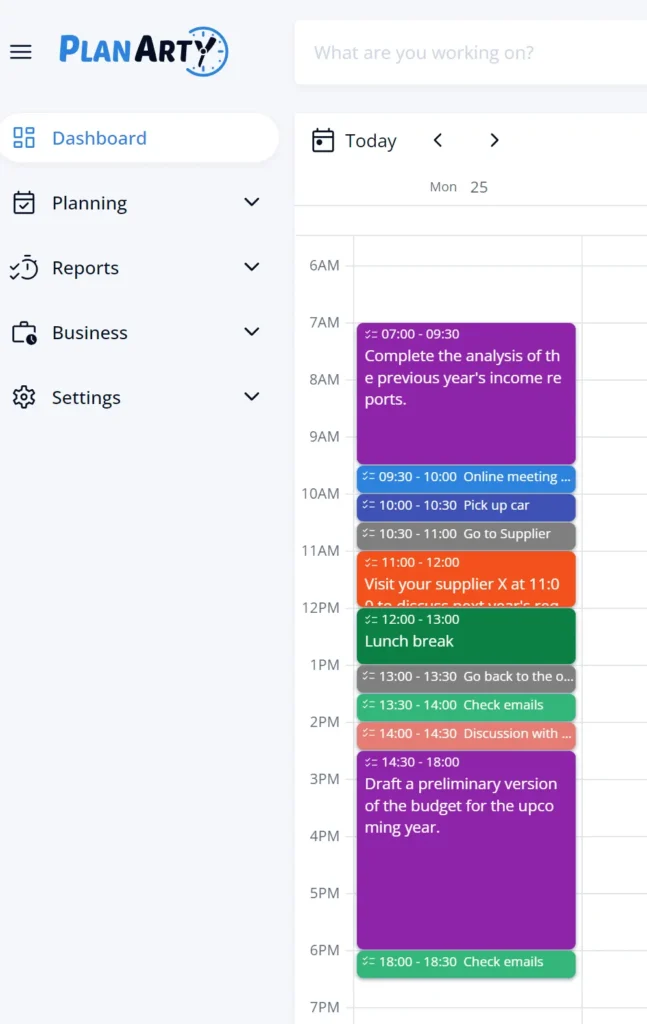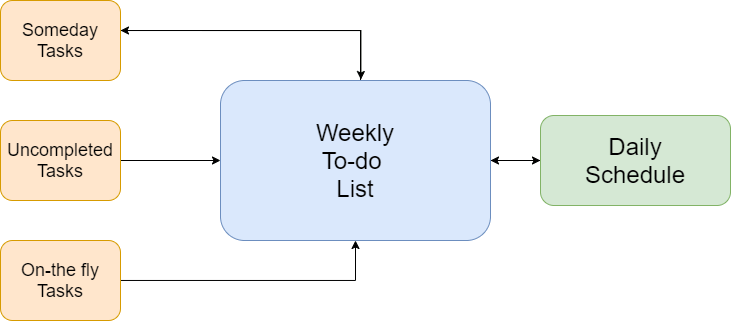What Is Procrastination?
Procrastination is the act of delaying or postponing tasks or actions to a later time. It’s a widespread occurrence that involves postponing day-to-day tasks or even deferring crucial responsibilities like going to an appointment, submitting a work report or academic project, or addressing a challenging issue with a partner.
Despite its universality, procrastination is a misunderstood phenomenon. It is often confused with laziness, but they are very different. While laziness suggests apathy, lack of action, and a tendency to do nothing, procrastination is an active process. You choose to do something else instead of the task you know you should be doing.
Procrastination usually means ignoring an unpleasant but likely more important task in favor of something easier or more enjoyable. However, giving in to this impulse can have serious consequences, such as stress, lower productivity, and worsened mental health. Procrastination might lead to feelings of guilt and anxiety, and it can also hinder personal development.
People often procrastinate because they fear failing at the tasks they must complete. This fear of failure can promote procrastination in various ways, such as causing people to avoid finishing a task if they cannot do it perfectly. Another major reason why people procrastinate is because they find the task unpleasant.
There is also evidence that procrastination is genetically linked. Some researchers have found a potential association between genetics and procrastination. This suggests that some people might be genetically predisposed to procrastinate more than others.
Despite the drawbacks, there are ways to overcome procrastination. Acknowledging one’s procrastination is an essential first step. Following that, strategies like prioritizing tasks, breaking them down into smaller parts, and setting specific deadlines can help one overcome procrastination. Remember, it’s never too late to stop procrastinating and start working toward your goals!
Impact of Procrastination on Freelancers
Procrastination can be particularly damaging to freelancers because they rely heavily on self-motivation and discipline to complete their work. Unlike traditional employees, a freelancer doesn’t typically have a supervisor or set working hours.
This freedom can lead to procrastination, resulting in missed deadlines and decreased productivity. When you procrastinate, you delay tasks that are necessary for the progression of your work. This could mean pushing back client work, delaying marketing efforts, or neglecting administrative tasks like invoicing or taxes.
Procrastination will also negatively affect your income as a freelancer. If you’re constantly pushing back work, you will take longer to complete projects and move on to the next ones, which reduces your earning potential. Furthermore, chronic procrastination can lead to stress and anxiety, which can impact your ability to focus and do quality work.
Additionally, a freelancer’s reputation is built mainly on reliability and delivering work on time. Procrastination can lead to missed deadlines and disappointed clients, thereby tarnishing your reputation and making it harder to secure future work.
Moreover, procrastination can eat into your personal time. Because your work schedule is flexible, you might work late nights or weekends to catch up on procrastinated tasks. This can disrupt your work-life balance.
Finally, the mental burden of unfinished tasks caused by procrastination can lead to burnout, further impacting your productivity and overall well-being. Therefore, you must recognize the signs of procrastination and develop strategies to combat it.
Overcoming procrastination can lead to increased productivity, higher earnings, less stress, and a better work-life balance for you as a freelancer. It’s certainly worth your effort to tackle this common issue head-on.
Impact of Procrastination on Employees
Procrastination can have a significant impact on your performance as an employee. It’s easy to succumb to distractions or put off tasks until the last minute. This can, however, lead to a variety of issues in your professional life.
Firstly, procrastination can result in missed deadlines. When you postpone tasks, you often end up rushing to complete them at the last minute, which can compromise the quality of your work. You also might not finish the task on time, which can lead to repercussions at work.
Secondly, when you procrastinate, you might notice decreased productivity. You spend more time thinking about doing the work than actually doing it.
Furthermore, constant procrastination can negatively affect your income and career progression. If you’re always putting off tasks, you might be seen as unreliable or uncommitted, impacting your chances of promotions or raises. This will also influence your relationship with your colleagues and superiors, potentially affecting future opportunities.
Procrastination can also lead to stress and anxiety. The guilt and worry associated with unfinished tasks can take a toll on your mental health, affecting your overall well-being and even your physical health.
Additionally, procrastination can disrupt your work-life balance. You might take work home or stay late to catch up on tasks you’ve put off, leaving less time for personal activities or relaxation.
Constantly being in a state of stress at your job due to procrastination can lead to burnout. This persistent pressure can drain your energy, overwhelm you, and make you emotionally exhausted. You must recognize the signs of procrastination and develop strategies to combat it.
Overcoming procrastination can lead to increased productivity, higher earnings, faster career promotions, less stress, and a better work-life balance.
Impact of Procrastination on Small Business Owners
Procrastination can be particularly detrimental to small business owners. Your success heavily relies on self-motivation and discipline.
By procrastinating, you delay critical tasks essential for your business’s growth and operation. This could mean postponing important decisions, delaying marketing efforts, or neglecting administrative tasks.
When you, as a small business owner, procrastinate, the effect can ripple through your entire team, causing delays in their work as well. Your procrastination can amplify the impact, as each employee’s productivity is potentially hindered, leading to a multiplied overall effect on your business operations.
Moreover, procrastination can negatively affect your cash flow. Constantly pushing back tasks like invoicing customers or paying suppliers can disrupt your cash flow and harm your business relationships.
In addition, procrastination can lead to stress and anxiety. The constant worry of unfinished tasks can affect your mental health, influencing your overall well-being and ability to make sound business decisions.
Procrastination can also tarnish your business reputation. Consistently missing deadlines or failing to deliver promised services can lead to dissatisfied customers and negative reviews and might make it harder to secure future business.
Furthermore, procrastination can eat into your personal time. As a small business owner, you have a flexible work schedule, but you might find yourself working late nights or weekends to catch up on delayed tasks. This disrupts your work-life balance.
Lastly, the mental load of unfinished tasks due to procrastination can lead to burnout. This can further impact your productivity and overall well-being. It’s essential to recognize the signs of procrastination and develop strategies to combat it.
What Are the Signs of Procrastination?
Recognizing the signs of procrastination is the first step toward overcoming it.
The ten most apparent signs of procrastination are:
- Constant Delays: You consistently put off starting or finishing tasks, making excuses for why you can’t do them now.
- Justifying Inaction: You regularly justify your inaction with statements like “I work better under pressure” or “I need to be in the right mood.”
- Seeking Distraction: You frequently engage in unproductive activities such as excessive social media use, watching TV, or other non-work-related tasks during your scheduled work hours.
- Feeling Overwhelmed: You often feel anxious or overwhelmed by the amount of work you have, yet you make little to no progress on these tasks.
- Poor Performance: Your work quality is suffering; you’re missing deadlines or receiving negative feedback due to delayed or subpar work.
- Avoidance Behavior: You avoid tasks that seem difficult or time-consuming, preferring to focus on easier or more enjoyable tasks instead.
- Inefficient Use of Time: You spend a lot of time planning or researching tasks without actually starting them.
- Indecision: You have trouble making decisions or often second-guess yourself, leading to action delays.
- Lack of Prioritization: You struggle with prioritizing tasks and often work on less critical tasks while leaving important ones undone.
- Procrastination Cycle: You experience a recurring cycle of procrastination – delaying tasks, feeling guilty, rushing to complete tasks at the last minute, and then feeling relief, only to repeat the cycle with the next task.
Overcoming Procrastination
The solution to this problem is a very simple one, yet it is challenging to implement. It requires, above all, self-discipline.
Divide your working hours into chunks of time according to the tasks you have to finish today. Then, in each chunk of time, do what you planned and nothing else. When the interval starts, shut down social media and the email client, put your phone on silent and not vibrate, close the door, and concentrate on one single thing: the task at hand.
Leave a free interval of time after each N number of time chunks, reserved for solving the issues that arose: Check your emails and answer the important ones, or call back your family/clients/friends if it cannot wait until the workday is finished.
Implementing the solution
You can implement this solution in 3 easy steps:

Write a list of all the tasks you wish to accomplish today.

Block the necessary time for each task from the list.

Complete each task in its appropriate time interval.
1. Write your list of tasks
Put all the tasks you wish to accomplish today into a list. Don’t bother about estimating how long each of them will take or the importance of them. Just write them down.
You can write this down on paper, use a Google Sheet/Excel template, or an online time management app. Please see working examples for the last two solutions in the Practical Examples section of this article.
2. Block the necessary time for each task from the list.
Now that you have the list of everything you wish to accomplish today, put aside the necessary time for each task. Do this in order of importance. And make sure to set aside a short time after some of your tasks to answer your emails and return missed phone calls.
3. Complete each task in its appropriate time interval.
When the time comes to start a task, set aside everything else and focus on nothing but the task. Put your phone on silent and close all email, social media, and messenger-like apps on your computer.
This way, you will channel all your efficiency into completing the assignment at hand, and you will have no interruptions to facilitate the appearance of procrastination.
Implementation difficulties
This solution is hard to implement for two main reasons:
- Our minds love to wander off for instant gratification. All those excellent social media posts are so exciting. It would be much more pleasant to call our friends to chat on the phone than to solve the problems we’re working on. But this is where we must be strong and say NO!
- Our clients expect us to answer them immediately. However, the world will not end if we answer them three or five hours later. And bear in mind that switching between tasks can consume up to 40% of your productivity! We can explain to our clients that this system allows us to serve them more efficiently, and we don’t accept interruptions when working on their tasks.
Practical Example – Freelancers
Suppose that you must complete the following tasks today:
- Write an article about Procrastination based on your already-done research.
- Do some research for your next article.
- Visit your doctor for an annual check-up.
- Buy some groceries
- Prepare a quotation for client X about writing him a blog article about the best food for a German shepherd.
You already have a fixed event for the day: your doctor’s appointment. The thought of not going there, going at another hour than the one scheduled, or doing multiple tasks during your visit doesn’t even cross your mind.
Treat all your tasks just like an appointment with the doctor. Schedule them in order of importance, and take your schedule exceptionally seriously.
As you can see in the above example, we schedule the most critical tasks at the beginning of the day, when we’re fresh and our productivity is at its best.
Then, we scheduled together the two tasks requiring us to leave our home. There is no reason to waste time going twice in the town.
We left the less demanding task for the evening. Researching is the perfect activity for this time when our brain is tired.
And very importantly, we also blocked some time during the day to stay in touch with our clients, answer their emails, or return their phone calls.
Practical Example – Employees
As an employee, you must complete your daily tasks within a set timeframe: your work hours. You also need to reserve some time for unexpected assignments that your supervisor gives you.
Suppose that you must complete the following tasks today:
- finalize the annual income report for last year
- attend a meeting about next year’s budget between 11:00 – 12:00
- send late-payment issues to the appropriate customers
- prepare the reports for a bank loan
- consult with HR to hire a new colleague for your department
You have a pre-established commitment for the day: your meeting, for which you must set aside time from 11:00 to 12:00.
As you can see in the example above, we’ve planned the most challenging and focus-intensive task at the start of the day when you are most efficient.
After your meeting, set aside time to check your emails. Because this task is similar to a meeting, you’re already in the right mindset to handle it effectively. Once you’ve handled your emails, allocate time for unexpected tasks that might arise from those very emails. If there are no urgent matters for the day, refer to your waiting list or “someday tasks” list, and work on as many items as possible within the allotted time.
Now you’re likely feeling hungry, so schedule a lunch break.
After eating, you might feel a bit sluggish due to digestion. That means the next thing on your agenda should be routine tasks that don’t require deep concentration, such as sending late payment notifications and chatting with your HR colleague. Remember to enjoy a refreshing cup of coffee.
Once you’ve regained some energy, tackle the next demanding task: preparing the report for the bank loan.
At the end of your workday, check your emails again. These might contain tasks that you need to schedule for the following day.
Practical example – Small Business Owners
As a small business owner, you enjoy a higher degree of flexibility, but you still have to adhere to certain fixed time slots due to the operational hours of your clients, suppliers, or relevant institutions.
Suppose that you must complete the following tasks today:
- Participate in the virtual meeting with your accountant from 09:30 to 10:00 to prepare the required reports for the bank loan.
- Complete the analysis of the previous year’s income reports.
- Draft a preliminary version of the budget for the upcoming year.
- Pick up your car from the service center, which operates from 09:00 to 17:00.
- Visit supplier X at 11:00 to discuss next year’s requirements for their product.
- Have a discussion with your colleague Y regarding the pay increase he requested.
Given your multiple pre-set commitments, you’ll need to strategically manage your remaining tasks around these fixed ones.
As depicted in the image above, we’ve arranged one of your most challenging tasks at the start of your workday, thereby capitalizing on your peak efficiency.
Afterward, you can conveniently conduct your online meeting from home, saving the additional commute time to the office for a virtual meeting. Once this is concluded, you can collect your car from the service center and proceed directly to your 11:00 supplier meeting.
Then, you might want to schedule lunch since you’re already in town.
After lunch, you can head to your office and allot time for less demanding tasks, such as checking emails and discussing the asked-for salary increase with your colleague.
Once you’re rejuvenated, tackle your second demanding task of the day – drafting a preliminary version of next year’s budget.
To wrap up your workday, check your emails once more. They might contain tasks requiring attention first thing the following day.
The Next Level
The SWDH method offers a more sophisticated approach to the already-presented solution for planning and executing tasks.
To begin, you establish a list of everything you aim to achieve in the upcoming week. This list serves as a roadmap for your week but doesn’t need to be overly detailed. For instance, you might note that you intend to write an article on procrastination without specifying the sections or research required at this stage.
Once you have laid out your broad objectives, the next step is to break down each goal into smaller, more digestible tasks. These tasks are the actionable steps that will lead you to complete your overall goal. By doing this, you make each goal less daunting and more manageable.
Now that you have your tasks, you assign each one to a specific day of the week. This step allows you to distribute your workload evenly across the week, preventing any single day from becoming too overwhelming.
Every evening, you take it a step further by creating a detailed schedule for the following day. This involves blocking out specific time slots for each task. Scheduling in this way ensures that you dedicate enough time to each task and helps prevent procrastination.
By following the SWDH method, you have a clear, structured overview of your entire workweek. This not only helps you stay focused and productive but also allows you to see at a glance what you have achieved and what tasks remain.








